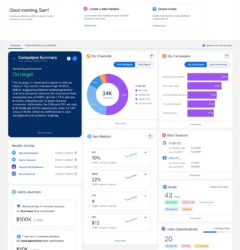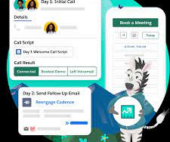Emotional impulses, rather than logical reasoning, are the primary drivers of decision-making. By evoking specific emotions in consumers, you can prompt them to take desired actions. The Psychology of Copy Writing goes far beyond knowing your product or service’s position and proposition. You have to create copy with the buyer in mind.
To evoke these emotions, you need triggers, which you can obtain by incorporating psychological principles into your copywriting. This expert utilization of psychological principles in content is known as neuromarketing, and you’re in the right place to learn how to leverage it effectively.
The Psychology of Copy Writing
- What is Neuromarketing?
- Why Use Neuromarketing in Your Copywriting?
- Neuromarketing Examples
- Effective Neuromarketing Techniques
What is Neuromarketing?
Neuromarketing combines neuroscience, psychology, cognitive science, and marketing to comprehend and influence consumer behavior. It dips into subconscious and emotional factors that influence decision-making.
Why Use Neuromarketing in Your Copywriting?
Incorporating neuromarketing techniques into your copywriting yields several benefits:
- Better Understanding of Consumer Behavior: Neuromarketing reveals emotional triggers and memory cues, enabling the creation of impactful marketing messages.
- Optimized Website Design: By studying user behavior and eye-tracking data, you can refine design elements to prompt desired actions.
- Improved Personalization and Targeting: Understanding individual preferences allows for tailored messages and offers.
- Enhanced Content Creation: Insights into how the brain processes information aid in crafting engaging stories that drive engagement.
Neurological engagement can boost advertising effectiveness by up to 19%. Additionally, 63% of users remember brands that tell stories, while 74% of consumers trust businesses more after reading positive reviews.
Neuromarketing Examples
Analyzing research insights allows you to identify neurological responses, emotional triggers, and attention patterns. Incorporating these insights into your marketing strategy can drive purchasing decisions. Here are some examples:
- Use of Odd Numbers in Headings: Odd numbers in headings are more thought-provoking, doubling their effect. Readers will be 74% more intrigued.
- Questions in Subheads: Format subheads as questions to spark curiosity and appeal to the fear of missing out (FOMO).
- The Socratic Method in Introductions: Pose three questions in a row to engage users and aid memory retention. Are you thinking now? Is it confusing? Do you wonder?
- Incorporation of Power Words and Active Verbs: Power words evoke emotions and prompt action, while active verbs add dynamism to your message.
- Utilization of Sensory Language: Appeal to the senses with sensory words to immerse readers in your story.
Effective Neuromarketing Techniques
Incorporate the following principles into your copywriting to drive desired actions:
- Authority: Position your brand as an expert in the industry.
- Common Enemy: Highlight shared challenges to foster unity.
- Consistency and Commitment: Encourage commitment through regular interaction.
- Cross-Marketing: Showcase related products or services to intersect various audience segments.
- Framing: Frame your message in a way that resonates with your audience’s mindset.
- Flattery: Incorporate genuine praise or appreciation to build rapport.
- Greed: Appeal to the desire for more through promotions and discounts.
- Herd Behavior: Highlight social proof to validate your offering.
- Intrigue: Create curiosity to keep users engaged.
- Justification: Explain the benefits of taking a desired action.
- Instant Benefit: Offer immediate rewards to visitors to encourage engagement.
- Novelty: Introduce innovative elements to captivate your audience.
- Reciprocity: Provide value upfront to encourage reciprocity from your audience.
- Result: Showcase tangible outcomes to demonstrate the effectiveness of your offering.
- Scarcity: Create urgency through limited availability tactics.
- Social Proof: Use testimonials and reviews to establish trust and credibility.
- Specifics: Provide concrete details to bolster your claims.
- Storytelling: Engage your audience with compelling narratives.
- Upsell: Encourage customers to purchase additional products or services.
- More Emotional Triggers: Tap into emotions such as trust, fear, belonging, curiosity, pride, guilt, urgency, relief, anticipation, and validation.
Apply these techniques ethically and transparently to build trust and enhance consumer engagement. Continuously test and iterate to refine your strategies based on audience feedback and behavioral insights.
Content updated April 2024.












